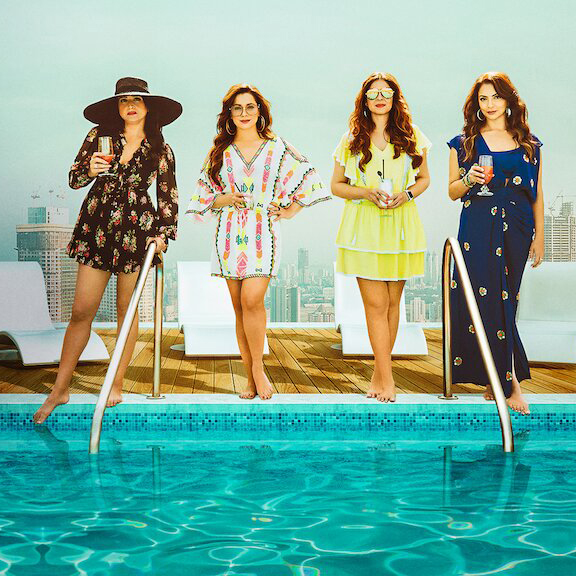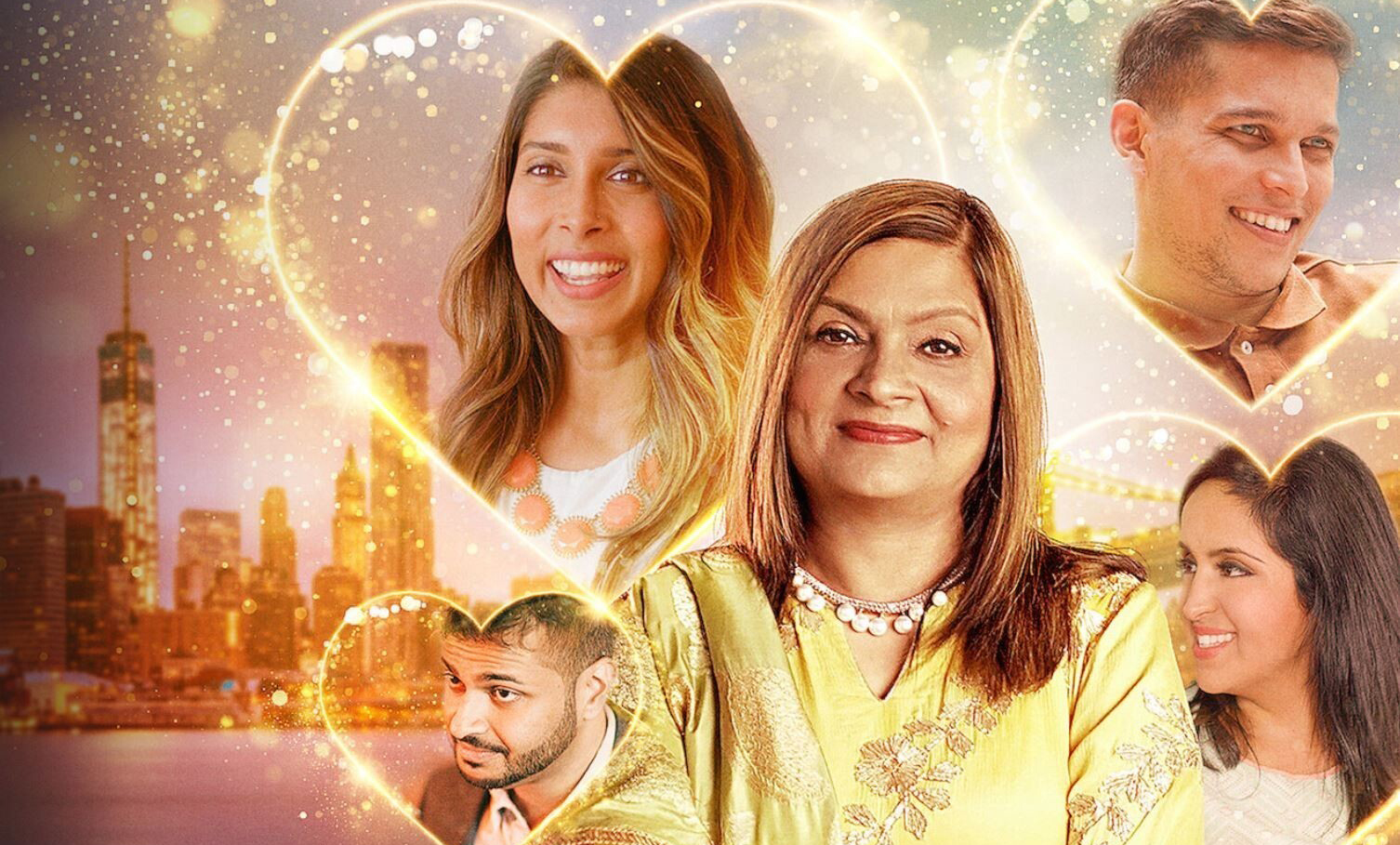I’ve spent a lot of time searching for myself on screens. When I was younger, Mean Girls took up a lot of real estate in the cultural landscape. Everyone wanted to be a Regina, Karen, Gretchen, or (God-forbid), Cady. In my sweet, middle school brain, I was a Gretchen, because we both had really big hair, and wore white gold hoops. However, at lunch one day, I was unkindly rebuffed by the girls I sat with, when they informed me in a matter of fact way that in fact I was not a Gretchen, as Gretchen was white. They told me this as if it was something I should have already known, as I, Layla, was brown. Apparently, there were no Layla Ahmads in Mean Girls. I was hurt, as I thought being Gretchen was a state of mind.
Although this did rip half my heart out, it did not dampen my loyalty to the movie (I still celebrate October 3rd the same as anybody else). It did, however, start my quest to figure out where the people who looked like me were, and why were they not in any of the movies or shows I liked? Turns out, I was not the only one seeking wider forms of South Asian representation in on screen media.
Just this past year alone, it feels like we have been spoiled for choice when it comes to South Asians on the small screen. Netflix has debuted popular shows such as Fabulous Lives of Bollywood Wives, and Indian Matchmaking. Meanwhile, Bravo is now home to the much anticipated reality TV show Family Karma, which is nestled amongst the seeming millions of Real Housewives franchises. As a viewer who is of South Asian descent (specifically, Bengali), and born and raised in North America (both Canada and the US), I was beside myself with excitement at the idea of finally having shows that might serve my niche in terms of existence. It was only once I finished binge watching did I put my thinking hat on and ask myself what I had seen. While it is important to applaud these shows as an amazing accomplishment, it is also very doable to appreciate their existence while being able to critique them.


First, there’s the issue of colourism
If we address specific shows that feature South Asians living in the West, such as Netflix’s Indian Matchmaking, and Bravo’s Family Karma, there were a few things that stood out to me. Firstly, the colourism in the casting echoed Indian media’s general obsession with fairness. India is notorious for a society that prefers fairness, including whitening creams such as “Fair and Lovely”, to the point where it tried to rename it this year to try to stem deeply embedded colourism.
Indian Matchmaking features a matchmaker and various suitor “contestants”, while Family Karma features an ensemble cast. There are degrees of colourism evident in both, which you can see just by watching the first five minutes. It’s worst and most open in Indian Matchmaking, where multiple parents and Sima Tapari (a.k.a. Sima Aunty), a professional matchmaker in Mumbai, repeatedly demand that their sons be introduced to “fair-skinned girls.” At certain points, I openly asked myself how this was made in 2020 before remembering that this is still a very pervasive issue today. Despite constant echoes throughout Bollywood and claims of “doing better”, it is evident that this is a deeply systemic and embedded issue.
And representation within the Indian community is few and far between
Indian Matchmaking was heralded for making Indian culture mainstream. I cannot begin to name how many of my white friends asked me about the show via Instagram. They asked for explainers, whether I also had a Sima in my life, and whether or not I had a biodata—never mind the fact that I’m not even Hindu, Indian, or you know, married.
This brings about the second point in the shows mentioned. As far as religious diversity, there is little. Neither shows have any Muslim cast members on them, and there is rarely any Sikh representation either. Most of the cast members are Hindu and Indian. We rarely get to see anyone of Pakistani or Bengali origin either. With such amazing platforms and the gates finally being open for wider representation, it would be wonderful to see a full spectrum of South Asians in the West truly embodied.
And tbh, these shows seem to be catered for the Western audience
In terms of presentation, these shows package themselves for the Western eye. This may be good for viewership numbers, but take into context that for some people, this is their sole cultural education for South Asian culture. In Bravo’s Family Karma, rituals, culture, and traditions are hammed up to almost comic levels, and many stereotypes are leaned on heavily to move plots along — from the played out “Why aren’t you married yet?”, to a mother in law who disapproves of her son’s girlfriend, and the male cast members being stereotypical “mama’s boys.” These shows for diasporic Indians and South Asians could have the potential to actually start some needed conversations about topics like casteism, racism, and colourism. But creating them in a way that reels Westerners in to view them with no context or surrounding education can create new issues. Also, these shows often make being Indian/South Asian seem like a huge burden, and sometimes, an embarrassment. It highlights the “ridiculousness” for the benefits of entertainment value. Behold, stereotypes prevail.
At the end of the day, we can still view these diverse shows with a critical lens
While these shows are considerably light entertainment, it is still okay to laugh along while asking deeper critical questions. After all, you are allowed to enjoy binging while simultaneously wearing your thinking hat and asking for more out of your media.
Personally, I really would like to see more people within the South Asian diaspora represented. All religions, regions, shapes, shades, and sizes. I also really want to see average South Asian people who are simply existing on TV, (think The Hills or Love Island), without having to perform anything cultural. Why shouldn’t all of us be represented, especially if we’re finally making it onto Netflix and Bravo? To get there it’s important to keep having these conversations both with your friends via Twitter and with your family members via any and all strange WhatsApp groups.
As for me, next time someone DMs me about a biodata, I’ll probably just fess up and say I have no clue what they’re talking about.
Layla Ahmad is a freelance writer and marketer based in Toronto. She has her first children’s book coming out with Second Story Press in Spring 2021. Layla loves binge watching TV until her corneas burn, cooking the same dish for different people so that it seems impressive, and feels best understood by her dog, Pippa. You can find her on all socials @talesoflayls.
Like this post? Follow The RepresentASIAN Project on Instagram, TikTok and YouTube to keep updated on the latest content.








